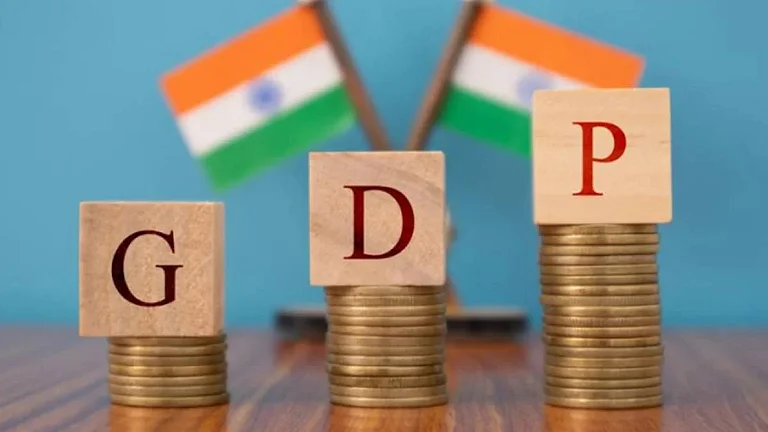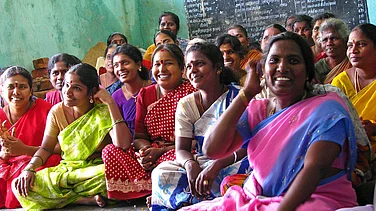India’s gross domestic product (GDP) in the first quarter of the 2025 financial year moderated to 6.7% versus a near 8% growth [projected] in every quarter of the financial year. That said it was mostly along expected lines. This downshift was expected because GDP in the last three quarters had been temporarily boosted by lower subsidy payments vis-a-vis the previous year, a phenomenon expected to end this quarter.
More importantly, if gross value added (GVA) is the true representation of growth momentum in India, it improved to 6.8% year-on-year in the first quarter of financial year 2025 from 6.4% in the fourth quarter of the 2024 financial year, albeit led by better agriculture and public administration.
Overall it is a healthy print keeping in mind spending/investment slowdown during the months around the general election.
Gloom Over?
The highlight of the quarter was a 7.4% growth in household consumption after 18 months of muted prints. It is widely known that lower to middle income households form a lion’s share of India’s household spending. So, does this growth print finally indicate that income gloom around low income and rural India is finally over? We might need such prints for a few more quarters to ascertain it.
Interestingly, investment spending, gauged by gross fixed capital formation (GFCF) and changes in stocks improved to 7.5% year-on-year (versus 6.5% in the fourth quarter of financial year 2024) and 5.6% year on-year (versus 5%) respectively. The general election had slowed new capex announcements and government capex spend in the first quarter of the 2025 financial year. But as per the companies’ guidance, there is visibility in the order book. As such capex momentum should stay healthy through the 2025 financial year unless there is a sudden sharp blow to global growth which current data does not seem to suggest.
Further, Reserve Bank of India (RBI) data suggests that private sector capex recovery is well on track. Funds sanctioned for the private sector capex by banks, financial institutions, external commercial borrowings (ECBs) and initial public offers (IPOs) surged 61% in the 2025 financial year.
They were most prominent in roads, energy, food processing and chemicals. The [Union] government’s Budget shows a moderate increase in capex spending. There is an increased expectation of private sector participation to fund the capex through a few asset monetisation methods.
Investment in valuables (largely physical gold/jewellery) declined 11% year-on-year perhaps because of higher prices.
Muted Government Spending
Government revenue spending stays muted, and its share dropped to 9.5% of GDP against 11% the past decade. This is despite an increased rhetoric or expectation that election outcomes would warrant a high welfare spend. If the announcement of the Unified Pension Scheme (UPS) is any guide it is a clear signal that the government is trying to meet public demands but limiting fiscal largesse to the best extent possible.
The continued robustness in real export growth of goods and services—8.7% in the first quarter of financial year 2025 versus 8.1% in the fourth quarter of financial year 2024 and 8% CAGR in the past three years—is perplexing.
We do not have the break-up of goods and services in real exports data yet. Our guess is that services exports are driving the possibility of external trade for India. Net exports added 0.7% points to overall growth and discrepancies subtracted 0.7% points from overall growth.
On the Supply Side
On the supply side GVA growth did better than GDP growth: GVA growth came in at 6.8% versus 6.3% in the previous quarter. So if the supply side is anything to go by, the election did not disrupt the output or production of goods and services in the economy.
Construction expanded 10.5% year-on-year (versus 8.5% in the previous quarter), services jumped to 7.2% (from 6.7%). Agriculture improved to a modest 2%, still better than the below 1% print in the previous two quarters. Manufacturing moderated but stayed healthy at 7% (from 8.9%).
Too Good to Be True
Hence the constituents of GDP data, if they are to be believed, feel too good to be true.
Practically every component that matters—consumption, investment, exports, construction, manufacturing and services—printed above 7% growth.
On top of this the outlook stays at nearly 7% each for the remaining quarters of the 2025 financial year. And all this at a time when the consumer price index (CPI) looks to be around 4% and the wholesale price index (WPI) under 3%.
Current account deficit (CAD) under 1% of GDP, fiscal consolidation better than thought and a stable rupee—what am I missing here?
Looking ahead, better monsoon and thus likely a better agriculture output, recovery in government capex spending and capex-oriented order book and a likely continued recovery in consumption spend are the factors adding to a positive near-term growth outlook for India.
On the other hand, moderating earnings before interest, taxes, depreciation and amortisation (EBITDA) growth (which feeds into gross value addition in GDP and softer global growth are some factors that offset the previously said benefits. Nominal growth moderated to 9.7% versus 9.9% in the previous quarter and hence continues to paint a sobering outlook for the top line of companies.
The writer is chief economist, SBI Mutual Fund. Views expressed are personal

























